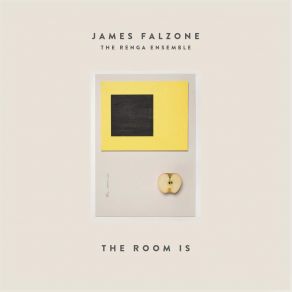The Room Is
Download links and information about The Room Is by James Falzone, The Renga Ensemble. This album was released in 2015 and it belongs to Jazz, Avant Garde Jazz, Classical genres. It contains 14 tracks with total duration of 01:11:05 minutes.

|
|
|---|---|
| Artist: | James Falzone, The Renga Ensemble |
| Release date: | 2015 |
| Genre: | Jazz, Avant Garde Jazz, Classical |
| Tracks: | 14 |
| Duration: | 01:11:05 |
| Buy it NOW at: | |
| Buy on iTunes $9.99 | |
| Buy on Songswave €2.00 | |
Tracks
[Edit]| No. | Title | Length |
|---|---|---|
| 1. | Prelude | 1:17 |
| 2. | Not Seeing | 6:37 |
| 3. | The First Renga (Ben) | 4:14 |
| 4. | The Second Renga (Ken) | 2:32 |
| 5. | The Room Is | 8:57 |
| 6. | Interlude | 1:14 |
| 7. | White | 11:24 |
| 8. | The Third Renga (Keefe) | 2:35 |
| 9. | The Fourth Renga (Ned) | 2:48 |
| 10. | Until | 13:32 |
| 11. | The Fifth Renga (James) | 3:55 |
| 12. | The Sixth Renga (Jason) | 3:03 |
| 13. | That Red Apple | 7:36 |
| 14. | Postlude | 1:21 |
Details
[Edit]To Chicago clarinetist/composer James Falzone, creative jazz fits within a continuum of musical expression extending back centuries. Indeed, 2000's The Already & the Not Yet, Falzone's debut album on his Allos Documents label, found the clarinetist interpreting early music dating as far back as fourth century plainchant. Arriving in 2015, The Room Is by the all-reeds Renga Ensemble finds him again taking inspiration from something centuries old, in this case Japanese renga, a poetic form whose opening stanzas evolved into haiku. Renga writers work in pairs or small groups to compose alternating stanzas of lengthy poems, using a technique with obvious parallels to jazz in the opportunities it provides for participants to express themselves individually while contributing to a collective whole. For this tenth Allos Documents release, Falzone wrote a suite of music for some very fine reed players: joining him on instruments ranging from the tart E-flat clarinet to the deeply resonant contra B-flat bass clarinet (alto and baritone saxophones are also featured) are Chicago's Ken Vandermark, Keefe Jackson, and Jason Stein; New York City's Ned Rothenberg; and Berkeley, California's Ben Goldberg. The sextet members sat in a circle when recording and, captured intimately but not overly dryly by engineer Greg Norman, fully immerse the listener in the middle of it all. The Room Is begins and ends with brief group improvisations, and includes another improvisational interlude at the suite's center; in all three instances, the players' long tones across their broad spectrum of reeds bring a rich array of timbres and evolving harmonies, creating a subdued contemporary classical feel from which the suite emerges and ultimately retreats, revisiting similar moods intermittently along the way.
But prepare for some robust attacks and extended techniques from delicate overtones to squalling multiphonics — hardly a surprise from this crew — as each of the sextet members takes on the role of an individual "Renga" during his own track, in which the others' engagement ranges from hushed contrast to spiky support or heated complementary dialogues ("The Second Renga [Ken]"). However, the lengthiest tracks — up to 13 and a half minutes long — find the individuals' creative energies fully absorbed into the collective; the simple yet evocative titles of these pieces are derived (as is the album's title itself) from fragments of a haiku penned by Anita Virgil. The initial rhythmic "Not Seeing" flowers from call-and-response two-note fragments into something deeply bluesy; the suite's title movement finds the musicians engaged in animated unison stops and starts before escalating into unrestrained polyphony matching the Julius Hemphill Sextet or Rova at their most urgent; "That Red Apple" launches into exuberant abstract swing sandwiched between its leaping and briskly tumbling themes. Ultimately, The Room Is' multifaceted journey remains true to its intriguing concept throughout, building upon and embellishing its earliest movements, deriving something new, and — as James Falzone sees jazz itself — pushing ever forward from roots in an ancient past toward an open future.